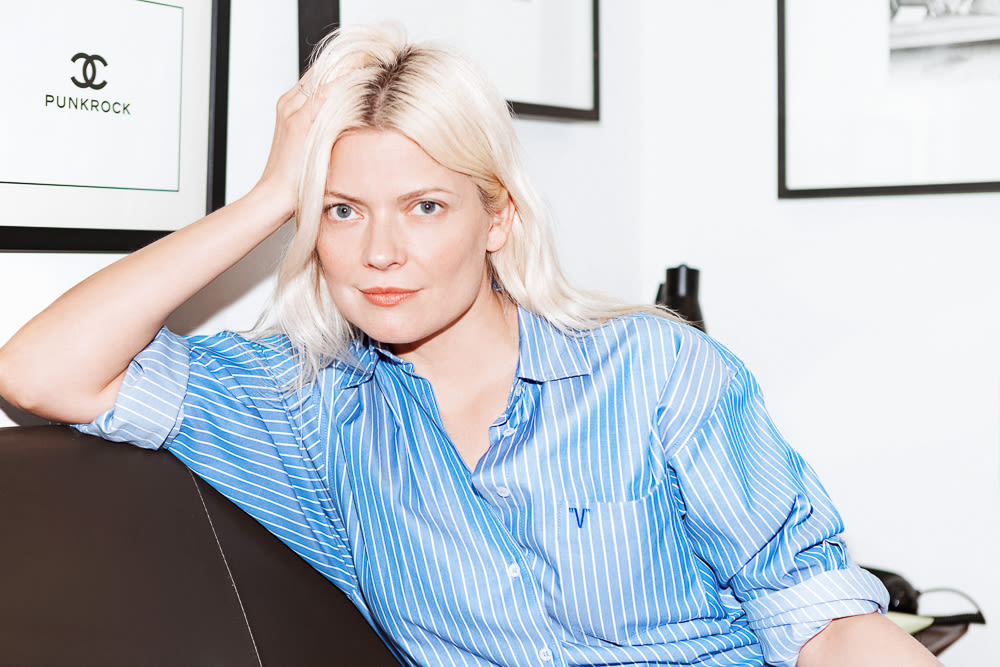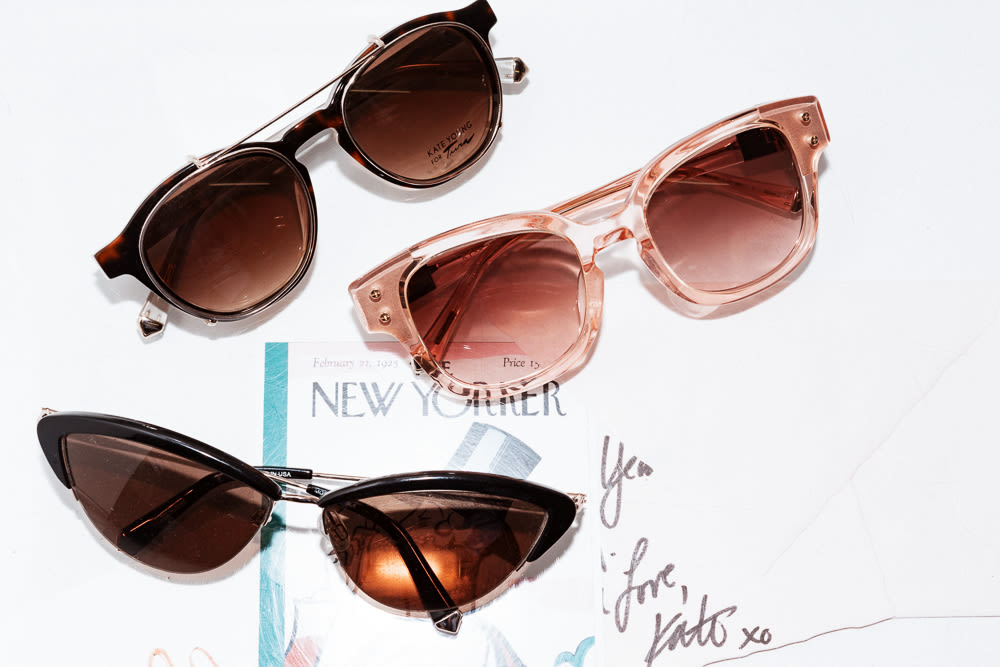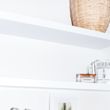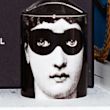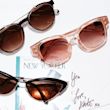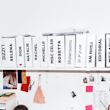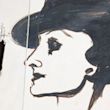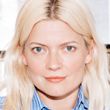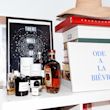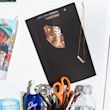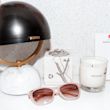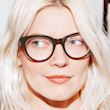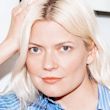"I grew up in Pennsylvania, about an hour from New York City. I was always into fashion—I wanted to go to FIT because my friend’s older sister went there. I remember coming home and telling my parents I wanted to go there and they laughed at me. Everybody in my family is a teacher or a professor, so I figured I’d probably be a librarian or something. I really like books and went to college for English and Art History because that’s what always came easy for me. And I didn’t know how to make fashion a job or what that could look like.
When I finished school, I got this job working for Lynne Franks, who did things like produce London Fashion Week. At one point, I came home for Christmas break and my mom really didn’t like that I was living in England and had this fashion job. We had one friend, a woman from my hometown, who was the art director at Glamour. And so my mom took me to have lunch with her, and the woman took me in to Condé Nast Human Resources to meet with Paul [Wilmot] and Anna [Wintour]—they needed assistants. And then I went home to Pennsylvania and I had a job offer on my phone by the time I got back. I took two weeks to quit my job in London and move to New York and then I started working at Vogue.
I didn’t know what a stylist was then—and there weren’t even freelance stylists in the industry. You had to work at a magazine to do projects like that. And most celebrities got dressed by their costume designers for the movies. I don’t think anybody gave a shit what they wore. If you look at Gwyneth Paltrow’s early premieres, she wore like, flip flops and her own dress. There weren’t magazines and blogs dedicated to what people wore to a movie premiere. They were artists, going to see a movie they’d made with the people they made it with. So none of that was on my mind—when I first got the job, I wanted to be Dorothy Parker. She’s an American writer who wrote captions for Vogue and was part of the Algonquin circle. I thought if I could be like her, a caption writer, I could write little books on the side.
After assisting the Editor in Chief at Vogue, I assisted the Market Editor, who calls in clothes for the shoots. Anna encouraged me to take that job if I wanted to be a fashion editor because she said it was important to understand how it works and to know people. We didn’t use email to request clothes at the time—we did it all by phone. So I talked on the phone with people all day long and I’m still friends with a lot of those people. It's a personal relationship when you’re talking to the Gucci PR girl five times a day, and you go get a drink after a particularly harrowing week and have fun. A lot of the people who are head of PR for big houses now are people who I’ve known since I was 23, 24 years old and have been working with since then. The length of those relationships has had a definite impact on my career.
After that, I started assisting on shoots with Tonne [Goodman] and that was amazing. The first shoot we did we went to Palm Beach with Maggie Rizer and Arthur Elgort. The shots were of Maggie playing golf and going to a party—you know, Arthur Elgort stuff. During that period, we traveled a lot, because Herb Ritts was still alive, so basically we went to LA every week. It’s complicated now because I have kids, but traveling is one of the things that makes me happiest in life.
Around that time, the team started creating Teen Vogue, which was initially just an insert in Vogue. There was also Men’s Vogue and the Vogue VH1 Fashion Awards with their own edition of the magazine. We were shooting tons of different things, to the point where I couldn’t assist Tonne and do all the work that needed to be done. At that point, I became a contributing editor at Vogue and Teen Vogue. My last day of work at Vogue was a Friday and my first day of freelance was a Monday, and I had to invoice instead of getting a paycheck, which was a little scary. But luckily, Teen Vogue became real and then I got contracted there, so that gave me a little stability financially. I had other contracts, too. For a while, street style was only a thing in Japan and I was huge in Japan—I had a lingerie line there that I would fly back and forth to work on. I also worked with Derek Lam on styling all his stuff. Those projects are the holy grail if you’re freelance because it pays for you to have an apartment and go on vacation.
After I had my second son, I made a conscious decision to stop hustling for editorial. I thought OK, if I’m going to work, I’m going to get the absolute most results for the effort I put in, and I feel like celebrities are where I have the most talent and I get the most recognition. At the time I started dressing celebrities, I got those shoots because nobody wanted to do them. Nobody wanted to dress celebrities! I felt like people thought I was a bit less of a fashion editor—and they still do. But it’s true! I’m not a real fashion editor, I’m a celebrity stylist. But to say someone is a celebrity stylist became less of a diss once Rachel Zoe happened.
When it comes to styling, I’m better with celebrity than anything else because I’m good at figuring people out. I find the women interesting, what they have to say and what they’re working on. When I work with my clients, I see what’s interesting to them so that we can magnify who they are and give them a more polished and refined visual representation of that image. I always research the subject I’m going to be styling. We create books of research filled with what I like that they’ve worn before and what I don’t like. It's all about who they should be. I want to know who their idols are and who they want to look like, and then I can figure out how that works. On the other side of that, I know which brands really trip over themselves to get pieces on my clients. Brands are hyper-aware of where and how and on whom they want their clothes worn—this started happening probably like two years ago. Now, my styling of celebrities gets me consulting gigs with brands because they see me and they want to make stuff my clients would want to wear.
I want to be a stylist who does other things too. I have my clients—Dakota Johnson, Sienna Miller, Natalie Portman, Michelle Williams, Rachel Weisz, Selena Gomez, Margot Robbie. But I just did a campaign for Clark’s, I do Pantene ads, I do Dior ads. My day-to-day changes all the time. Then I have the book I did, which started as all the inspiration boards I made for my clients over the years. That was the same time Target called me, so we created a clothing collection that made sense with what I had been working on. More recently, I did a line of sunglasses and eyewear with the brand Tura. All these things tend to happen really organically, through friends and people I meet. And it’s just fun to make stuff, to play with materials and try things on. I hope there will be more physical stuff in the future that I can have a hand in. I don’t want to be tying people’s shoes for the rest of my life! [Laughs]"
—as told to ITG
Kate Young photographed by Tom Newton in New York on May 16, 2016.
Kate, Kate, Kate, Kate, Kate: Catch up on the stylist's Top Shelf and Top Shelf After Dark.
